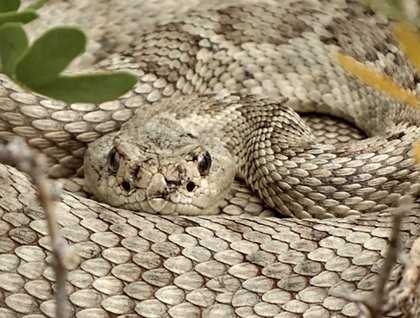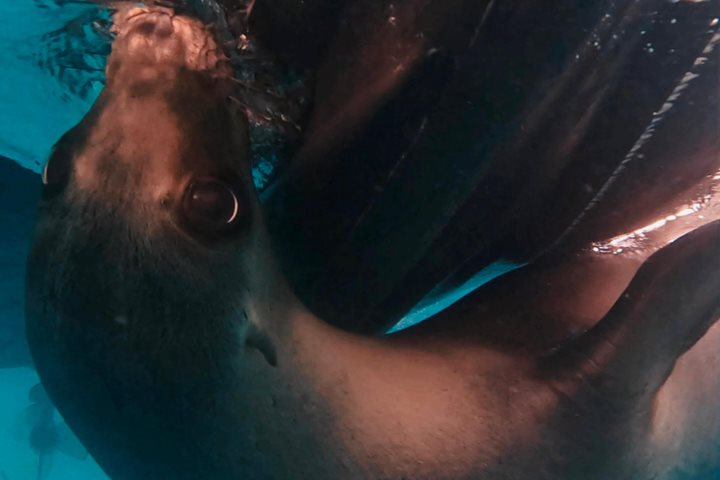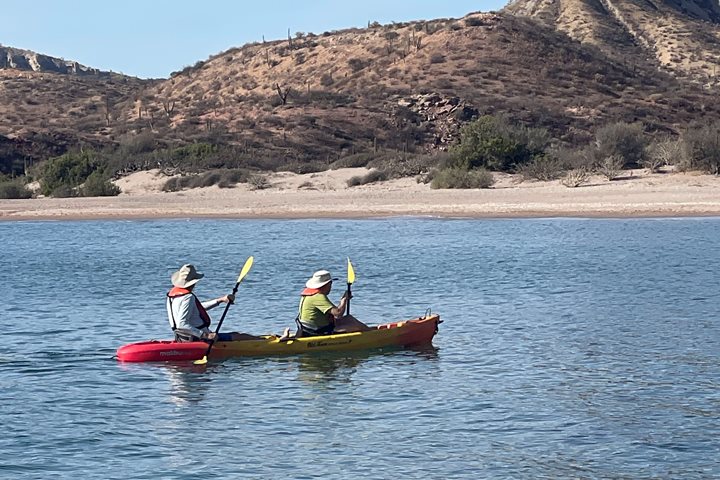A brilliant sunrise welcomed the day just offshore from Isla Santa Catalina, our destination for the morning. A broad beach known as Tursiops, named for the genus of bottlenose dolphins, separated the open bay from a colorful desert landscape. Hikers entered a dry creek drainage, or arroyo, for walks of differing lengths to search for photo opportunities, birds, reptiles, and the giant barrel cactus, found only here and several other islands in the Sea of Cortez. Yellow blossoms covered the green-trunked palo verde trees, and creamy flowers decorated the towering columns of cardon cacti. Prickly poppy petals looked like fragile tissue paper in harsh contrast to the coarse spiny surface of the rotund barrel cacti. Cardinals, black-throated sparrows, loggerhead shrikes, and white-winged doves caught our attention. A pair of ash-throated flycatchers guarded their nest, which was a hole in a cardon excavated by gila woodpeckers in the past.
Everyone was on alert for the endemic rattlesnake, a shy species that occurs on this island and no place else in the world. It is unusual because it has no rattle, although it still contains venom like its relatives elsewhere. Sharp-eyed observers from different hiking groups discovered a total of five of these creatures beneath the thick vegetation that flanked the gravel streambed. Both gray and brown individuals occur and are well camouflaged against the granitic rocks and reddish leaf litter. As with other rattlesnakes, two pits are present below the eyes. These can detect heat from potential prey. In addition to the snakes, we spotted desert iguanas, a chuckwalla, and the beautiful side-blotched lizards that are teal-colored on this island. After our hikes, some entered the underwater world for snorkeling, while others explored by kayak.
Throughout the afternoon, the ship motored south. Sabine’s gulls, Craveri’s murrelets, and storm-petrels appeared now and then, and a number of people had a brief sighting of a dwarf sperm whale, an unusual dolphin-like animal, and at least two beaked whales, very rarely seen marine mammals about which little is known.
During cocktail hour a guest slide show scrolled on the screens with fascinating and creative images captured throughout the week. It was a perfect summary and a fitting culmination of our time together on our voyage aboard the National Geographic Sea Bird in the Sea of Cortez.







